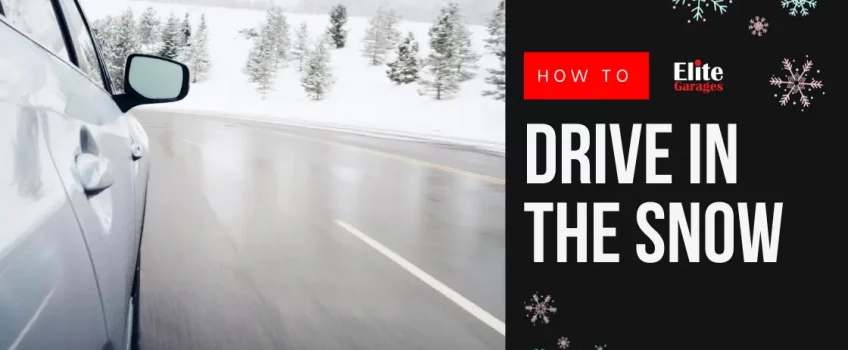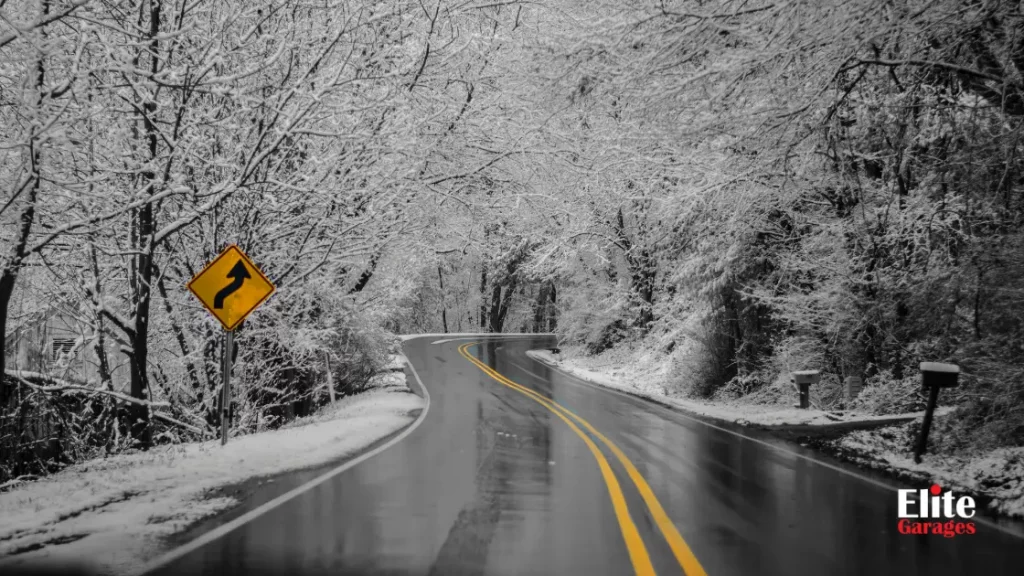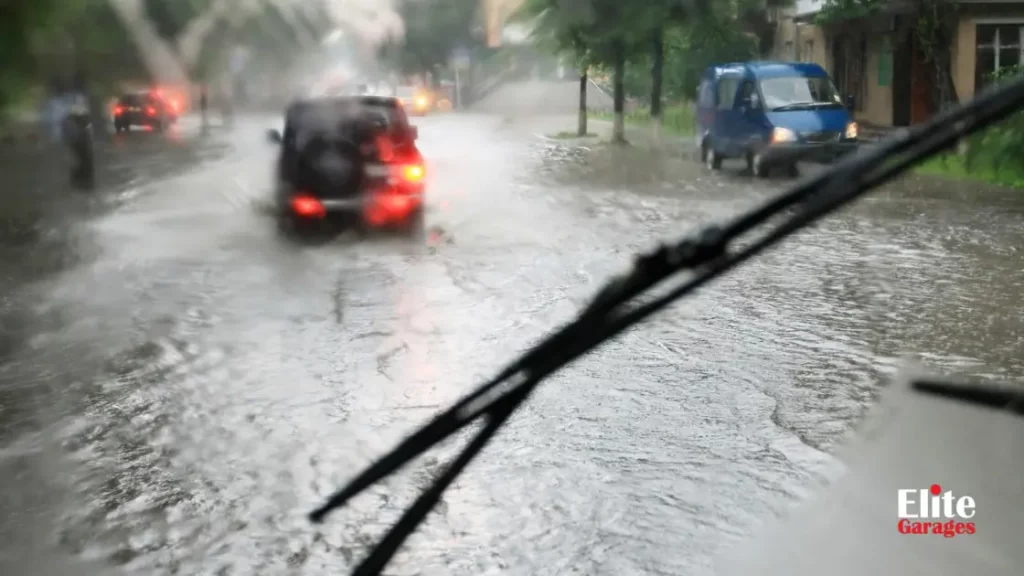
Stay Safe This Winter: Top Tips For Driving In Snow
Driving in snow and in icy conditions can be extremely dangerous with freezing temperatures, poor visibility and longer stopping distances being some of the biggest concerns. It is important to take extra caution and prepare for the worst if there is a forecast of sleet and heavy snow, especially during cold snaps as the UK is experiencing at the moment. To help keep you safe this winter, follow our guide with expert tips on driving in snow, ice and in heavy rains.
What Are The Risks Of Driving In Snow?
One of the biggest risks of driving in snow is the potential for losing control of your vehicle as snow can make roads slippery and reduce traction. If you are not careful, you may find yourself sliding or skidding on the road, which can be dangerous for you and other road users.
Another risk of driving in snow is reduced visibility as snowflakes can obscure your vision as they fall, while snow on the ground can reflect light and create a glare that makes it difficult to see. In addition, snow can build up on your windshield, obscuring your view of the road ahead.
Winter Weather Driving Tips: Plan For The Worst
Before setting out on your journey, check the local weather forecast to see if there is a chance of snow, ice or heavy rain. If icy conditions are expected, it is best to avoid driving unless it is absolutely necessary. Driving in snow can also be tiring and stressful, which can increase the likelihood of accidents. In wintry conditions, it’s best to plan your journey and give yourself enough time to safely manage any traffic jams due to snow-covered roads, fresh snow and black ice.
How To Prepare For Driving In Snow
To prepare for driving in snow, it is important that your vehicle is in good working condition and that means having it serviced regularly and passing your annual MOT. To avoid winter weather driving woes, here are a few important things to consider:
- Plan your journey according to the local weather reports and try to avoid high-risk areas if possible
- Check the tyres and the sidewall for any signs of damage and that their tread depth is more than 1.6mm
- Inflate your tyres to the recommended pressure according to your vehicle owner’s manual
- Check the fluid levels, including the windshield wiper fluid
- Check that the headlights, tail lights and brake lights are all functioning properly to ensure full visibility
- Pack an emergency kit in your vehicle with items such as sunglasses, shovel, blanket, flashlight, extra warm clothing, first aid kit, mobile phone charger, ice scraper and warning triangle
Safely Navigating Snow Or Icy Roads
If you encounter icy roads, it is important to be aware of the potential dangers especially when visibility is poor. Snow and ice present several hazards, including reduced traction and control. When it comes to navigating icy roads, here are some tips you may want to jot down somewhere:
- Keep your speed at a minimum and try to avoid braking suddenly as this can cause skidding
- When approaching a slippery spot, tap your brakes to reduce speed without skidding
- Increase your following distance to give yourself extra time and space to react
- In the event of a skid, try not to panic and gently ease off the accelerator with low revs while steering in the direction of the skid until you regain control and the rear of the car
In general, when driving in snow, it is important to stay alert and be prepared for any situation that may arise. Driving cautiously and sensibly will help ensure your safety as well as the safety of other road users.

Book A Free Winter Safety Check
As the weather changes, it’s essential to make sure your vehicle is ready for winter. To help you stay safe on the roads, all of our branches offer a free winter safety check. Our experienced technicians will inspect everything from your windscreen and wipers to the brakes, tyres and lights to ensure your vehicle is ready for whatever winter throws your way.
They will also provide you with a list of recommended services and repairs to help make sure your vehicle is running safely, efficiently, and reliably. Plus, our team of service experts can answer any questions you may have about the maintenance items on your list.
What Is Black Ice?
Black ice is a thin and almost transparent layer of ice that forms on roadways. It is often difficult to see since it usually forms in areas with less light, such as under bridges or dark corners in the road.
Black ice is caused by the combination of water on the road, which freezes when temperatures drop below freezing. This means that black ice can form even in relatively mild climates, as long as there is moisture present and temperatures low enough to turn it into ice. It also tends to form during evening hours, when cooler air overnight drops the temperature.
How To Safely Drive On Black Ice
While driving in snow presents many challenges, black ice can be especially dangerous as it is hard to spot and deceptively smooth and slippery. The glare of low winter sun can make it even worse so it’s important that motorists pay careful attention when the report forecasts extreme conditions. Here are some important tips:
- Be especially careful during late night or early morning hours in cold climates
- When black ice is present, it’s best to stay off them if possible
- Drive slowly and cautiously or waiting for temperatures to rise above freezing can help avoid dangerous conditions
- Fit winter tyres or all-season tyres at the very least
- Drive with your headlights on to help you spot black ice in the dark
- When caught on black ice, do not apply the brakes but rather steer in the direction of the spin until you regain traction
- From there, slowly apply the brakes until you come to a safe stop
Snow Socks, Snow Chains or Winter Tyres?
Winter tyres, snow socks and snow chains are all designed to improve traction on ice and snow-covered roads. Winter tyres are made from a special rubber compound that remains flexible in cold temperatures, which allows them to maintain a better grip on the road. Snow socks, on the other hand, are fabric covers that are slipped over the tyre to provide additional traction. Snow chains are metal chains that are attached to the tyres to improve grip on snow and ice.
Winter tyres are designed for use on all types of vehicles and once fitted, your job is done. Snow socks and snow chains, on the other hand, must be fitted to the vehicle’s driving wheels, i.e. front or rear-wheel drive. They are also often difficult to fit onto your tyres and may come off without warning. Additionally, snow socks and snow chains are not suitable for use on all road surfaces, as they can cause damage to the road and can be noisy.
Should I Fit Winter Tyres?
Winter tyres are the most effective option, as they are specifically designed for use in winter conditions. Fitting winter tyres to your car can improve safety in cold and icy weather conditions but whether or not to fit them should be based on individual circumstances. If you live in an area with frequent snowfall or icy roads, then winter tyres are a good investment for improved grip and traction. In milder conditions, and if you don’t often drive in adverse conditions, all-season tyres or a high-quality premium tyre should suffice.
Also read: All-Season Tyres or Winter Tyres?
How To Drive Safely In Heavy Rain

Driving in heavy rain can be dangerous, but you can stay safe by taking the proper precautions and following careful driving habits. Here are some tips on how to drive safely during heavy rainfall:
- The most important thing you should do is to reduce your speed and maintain a safe following distance from other vehicles
- Never drive without turning on your headlights in inclement weather
- Avoid puddles as they can hide potholes and other obstacles on the road. If you can’t avoid them, drive over them slowly and carefully
- Be aware of hydroplaning which occurs when your vehicle skids out of control due to water on the road surface. Avoid this by driving slower and not slamming on your brakes
- Be extra cautious at intersections as motorists have less time to react and make decisions
Final Thoughts: Driving In Snow And Ice
In conclusion, driving on icy roads is dangerous and you should reduce your speed and leave plenty of room between your vehicle and the one in front of you. This will give you more time to react to any slippery spots or changes in road conditions. Avoid sudden movements and be gentle with the accelerator, brake, and steering wheel.
It is also important to use your headlights and turn signals when driving in icy conditions. This will make your vehicle more visible to other drivers and can help prevent accidents. Overall, the key to safe driving in icy conditions is to slow down, stay alert, and be prepared for any challenges that the road may present.
By taking these precautions, you can enjoy a safe and successful journey. Elite Garages can help whether you need new tyres, a car service or EV service, a battery replacement or new brakes.
FAQ on Driving in Snow
What should I do if my car skids?
If your car begins to skid, stay calm and don’t panic. Take your foot off the accelerator and steer in the direction of the skid until you regain control of the vehicle and be sure to brake lightly.
Is it safe to use cruise control on snow or ice?
Generally, it is not safe to use cruise control on snow or ice. Cruise control can cause your vehicle to speed up unexpectedly and increase the risk of skidding on icy roads.
What are the best tyres for driving in snow?
It is best to use winter tyres or all-season tyres when driving in the snow. With many different brands to choose from, our tyre experts can help find the best tyre for your driving requirements and budget.
What can I do if I get stuck in a snowstorm?
If you get stuck in a snowstorm, stay inside your car and remain calm. Put on extra layers of clothing to keep warm and run the engine for 10 minutes every hour to keep the interior temperature warm. Remember to crack a window to avoid carbon monoxide poisoning.
About Us
Opening Times
Saturday : 8:30–4:00
Sunday : closed
More Information
Contact UsCustomer Information Pack
Check MOT Due Date
Free MOT reminder
Careers
Legal Information
Recent Posts
- Why Short Winter Journeys Cause So Many Common Car Problems
- Why Car Problems Happen More Often in January (And What Drivers Miss)
- Why the Right Car Service Garage Matters: Advice Drivers Trusted Most in 2025
- Christmas Guide to Winter Car Checks: From All of Us at Elite Garages
- Want to Prevent Exhaust Damage and Reduce Emissions?


